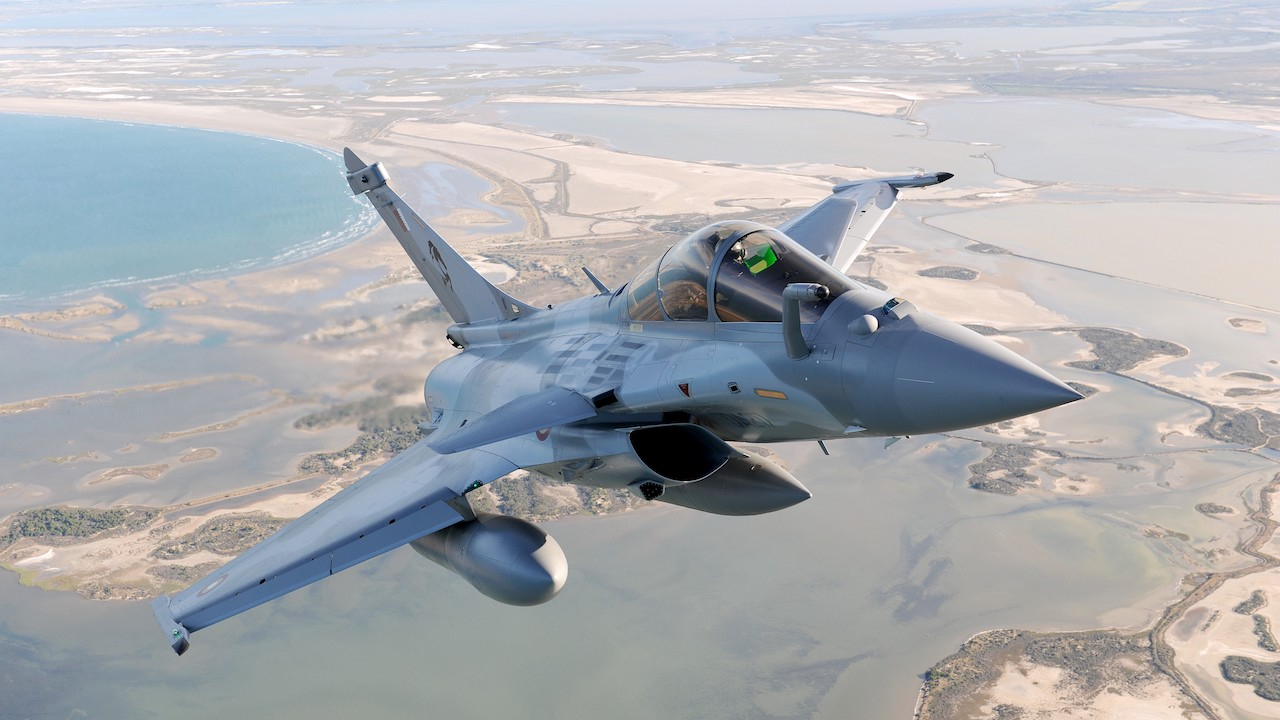One careful owner – why Mirage sale might be no illusion

But the Mirage 2000-9 is far from being obsolete or past its prime and it has been estimated that $3.4 billion of the $9.9 billion spent by the UAE has been used on the Mirage 2000-9 series (with $6.5 billion spent on the Block 60 F-16). The UAE, therefore, naturally expects to realise a good price for these versatile, modern and highly capable strike fighters.
Though the UAE’s first batch of 36 Mirage 2000s were purchased in 1986, 30 survivors have been extensively refurbished and then upgraded – bringing them to the same standard as the 32 new Mirage 2000-9s ordered in 1998 under the so-called Bader 21 purchase agreement and delivered from 2003. As such, all surviving UAE Air Force and Air Defence Mirage 2000s now share the same 21st Century 2000-9 configuration and, thus, represent the top of the Mirage 2000 evolutionary tree.
The Mirage 2000-9 incorporates state-of-the-art technologies and advanced capabilities that the basic Mirage 2000 lacks, many of which were incorporated as a direct result of experience gained by Dassault during the development of the Rafale, and which may be viewed as ‘Rafale technology’, with similar modular avionics, an LCD glass cockpit with full night vision goggles compatibility, and advanced sensors and systems.
At the core of the Mirage 2000-9’s navigation and attack system is a Thales-and Dassault Aviation-developed modular data processing unit (MDPU) that is similar to that used by the Rafale. This serves as the mission computer, manages the navigation and attack system, controls the cockpit display system and generates symbology for the head-up display (HUD) and head-down displays (HDDs). As a result, the Mirage 2000-9 is claimed to enjoy a world-beating, highly intuitive man-machine interface.
Though the Mirage 2000-9 is externally very similar to the original Mirage 2000C fighter, it actually represents the culmination of several stages of technical advance. The Mirage 2000-5 was developed as a private venture multi-role update of the fighter Mirage 2000 with a new Thales RDY multimode radar, a wide-angle HUD, hands-on throttle and stick (HOTAS) controls, and with provision for a Thales TV/CT CLDP laser designator pod.
A two-seat Mirage 2000B was extensively upgraded and modified to serve as the first Mirage 2000-5 prototype, making its maiden flight on October 24 1990. Thirty-seven existing Armée de l’Air Mirage 2000s were upgraded to 2000-5F standards, becoming operational in 2000.
The aircraft was further upgraded for export customers as the Mirage 2000-5 Mark 2. This added RDY-2 radar with enhanced air-to-ground capabilities. The Mk 2 also gained a new Thales Totem 3000 ring laser gyro IN/GPS, an ICMS 2 countermeasures suite and a Samir DDM missile warning system, higher resolution colour cockpit displays, and provision for a Topsight helmet-mounted display.
Compared to the Mirage 2000-5 Mk 2, the UAE’s -9 variant incorporates what Dassault coyly refers to as “additional operating capabilities specified by the UAE AF & AD”, and which include enhanced survivability and much-improved long-range stand-off air-to-ground capabilities.
With the USA unwilling to facilitate the integration of certain local weapons on aircraft that it supplies to the UAE, to avoid upsetting certain regional sensitivities, it has been the Mirage 2000 that has acted as the delivery platform for the UAE’s Black Shaheen cruise missile (a derivative of the MBDA Apache/SCALP/Storm Shadow) and the MBDA Al Hakim family of rocket-boosted LGBs. The original UAE Mirage 2000EAD was equipped with a ‘day-only’ ATLIS II laser targeting pod, but the Mirage 2000-9 was provided with a new Shehab laser designation pod – with a Nahar navigation FLIR in the dedicated pylon used to attach the Shehab pod to the aircraft.
The Mirage 2000-9 has a unique new IMEWS electronic warfare and countermeasures system. IMEWS was designed and developed by Thales, Elettronica and MBDA to UAE Air Force and Air Defence requirements.
The aircraft also has a new Thales communication, navigation, identification (CNI) suite, with a frequency-agile Thomrad V/UHF secure voice radio system, and an LU2 tactical datalink.
The Mirage 2000-9 is powered by the latest version of the SNECMA M53-P2 turbofan, incorporating FADEC and a sophisticated autothrottle (which provides automatic control of engine speed to maintain whatever speed is selected by the pilot).
Development of the Mirage 2000-9 was spread over five years and was divided into two distinct weapon delivery and navigation system standards, known as SAD91 and SAD92. Deliveries of 32 new-build aircraft to SAD91 standards began at the end of April 2003 and continued until early 2004.
Retrofitting of the UAE’s surviving 30 Mirage 2000EAD/RAD/DADs to the new standard was jointly undertaken by French specialists based in
The Mirage 2000-9 programme provided the UAE AF & AD with invaluable experience and allowed the UAE to establish in-country software development, weapon integration, test and evaluation capabilities.
If the country’s planned Rafale purchase goes ahead, the UAE’s surplus fleet of Mirage 2000-9s would represent an extremely potent fighter for any buyer, far more modern and far more capable than the simple Mirage 2000 name might suggest, and quite probably available at a bargain price.
Stay up to date
Subscribe to the free Times Aerospace newsletter and receive the latest content every week. We'll never share your email address.

